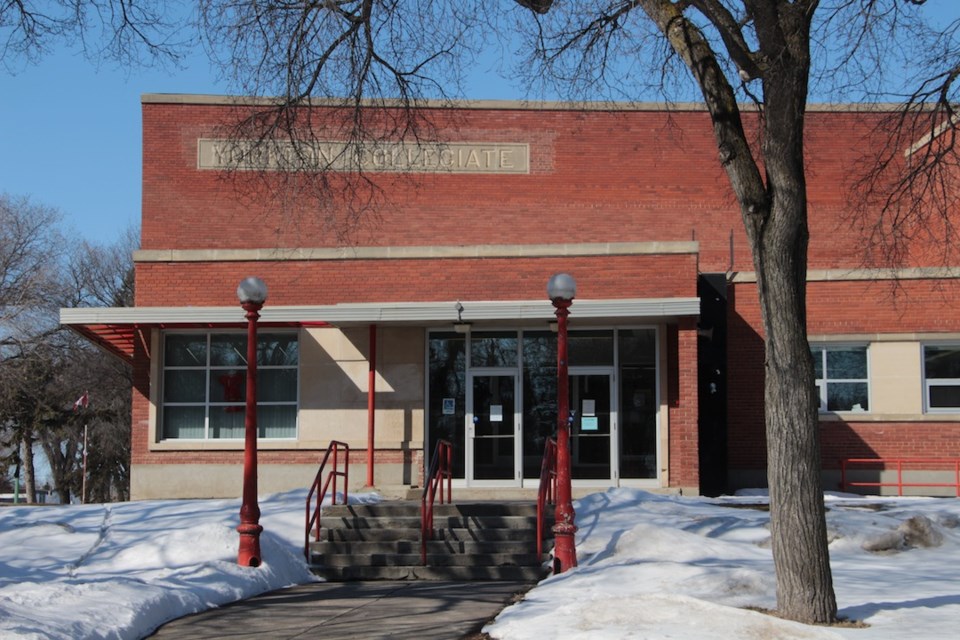Schools are ready to get back to class, but they won’t be doing it in the actual school buildings. Students across Yorkton, and Saskatchewan as a whole, can choose to keep learning over the coming months, with teachers are hosting supplemental learning across the province.
What has it been like for teachers to start teaching from their homes? We spoke to two principals - Quinn Haider from St. Paul’s School and Jason Gordon from Dr. Brass School - about how the switch is going for them.
“It is like going on a big journey, and you know where the journey is supposed to end, but the road map or the GPS has changed a few times on that journey. We are trying to get as creative as we can to meet the needs of all of those kids. What’s particularly tough is the kids who don’t have access to technology, trying to connect with them is not as easy as connecting with the kids who have access to the tech... We have to figure out a solution to that, and there’s a lot of people working on it,” said Haider.
It has been a learning time for everyone, and both principals said that it has been a learning process to go from students in front of them to students still in their home. Haider said that he’s impressed by how quickly students have grabbed onto new form of class.
“When I post my math assignments first thing in the morning, within 20 minutes I have some to mark and give feedback to right away. Kids are still consuming the content and still wanting to learn,” said Haider.
The classes are optional, and Gordon said that they fully recognize that there are plenty of situations at home that would make it difficult for a student to take advantage of it.
“This isn’t an education emergency, this is a societal emergency. We want to continue to offer that supplemental education for families, but fully recognize that there’s lots going on at home, not only for teachers but for families.”
The Good Spirit School Division has a supplemental learning plan, available on their website at gssd.ca, which is being used by all schools within the division. The plan provides guidelines to teachers and families for how supplemental learning is going to take place over the coming months, as the quarantine continues. Gordon said that this plan, as well as professional development opportunities, has been invaluable for teachers, as they are entering uncharted waters, and conducting class in a new way.
“It’s been awesome, with the support we’ve had from our school division leaders within our supplemental learning plan, and getting all of our teachers up to speed with creating platforms they can access from home,” said Gordon.
Gordon said it’s a new experience, but that they’re seeing excitement from the students to get connected to their teachers.
“What I’m finding right now is that the number one thing is that kids are really excited about getting their assignments, seeing their teachers and their friends in the platforms we’re using.”
What impresses Haider most has been the buy-in from the school families.
“What’s wonderful and validating is that this is optional, and we have had the vast majority of our families and, more importantly, the students in those classes, jumping on board with both feet and learning from home. Even though they don’t really have to, the fact that they want to is awesome.”
The other goal of the supplemental learning program is to keep the connection between students and teachers. Gordon said that they’re glad to see kids excited to connect and keep class going, even from home, and have also been doing things like ‘virtual spirit weeks’ to keep the community aspect of the school going.
“The biggest thing we do in teaching is relationships, so how can we keep that virtual relationship alive so that kids are engaged and want to complete assignments and want to look at the supplemental learning,” Gordon said.
Dr. Brass has been doing video conferencing for classrooms, which Gordon likes because it keeps connections alive.
“I was in a video call with our Grade 2-3 classroom and they’re just so excited to get on there, you see their faces across the screen, and they all want to chat with their friends, and I’m so glad we’ve found platforms to allow them to do that.”
Google Classroom is the most common platform for the online courses – it is being used by both Christ the Teacher Catholic School Division and Good Spirit School Division.
“I can’t imagine how we would have done this before Google Classroom, I just don’t know. It’s a blessing that we have it,” said Haider.
Still, even with technology on offer, Haider said that an online classroom is never going to be the equal to school that operates in person. He noted that it’s much more difficult to get individualized instruction when it’s all online, and difficult to see what kids need and build relationships. It’s a great substitute when a classroom isn’t available, said Haider, but he’s looking forward to when school can be back to normal, and students and staff can be in the same building together.
“It’s not as good as the real thing, but we’re going to make do with the second best choice here.”

.png;w=120;h=80;mode=crop)


